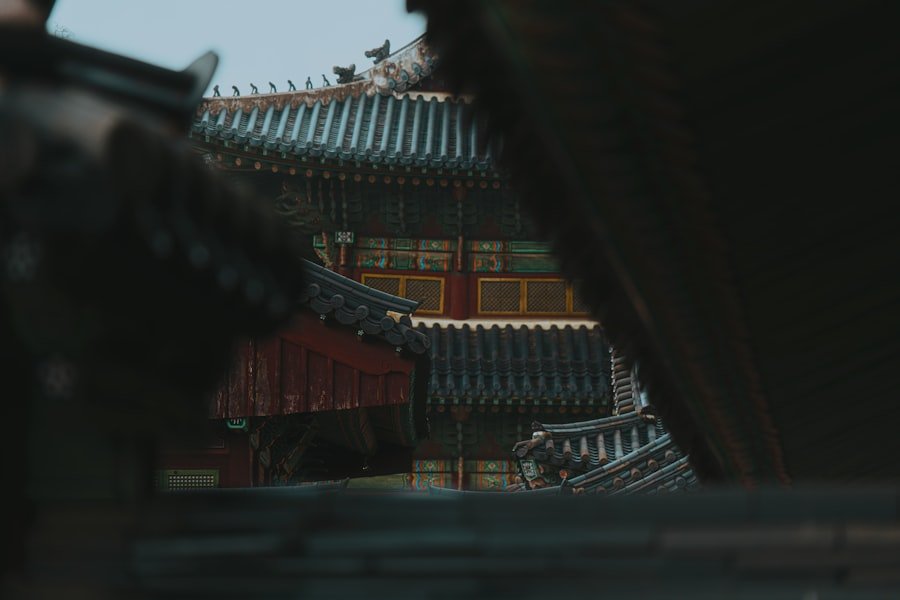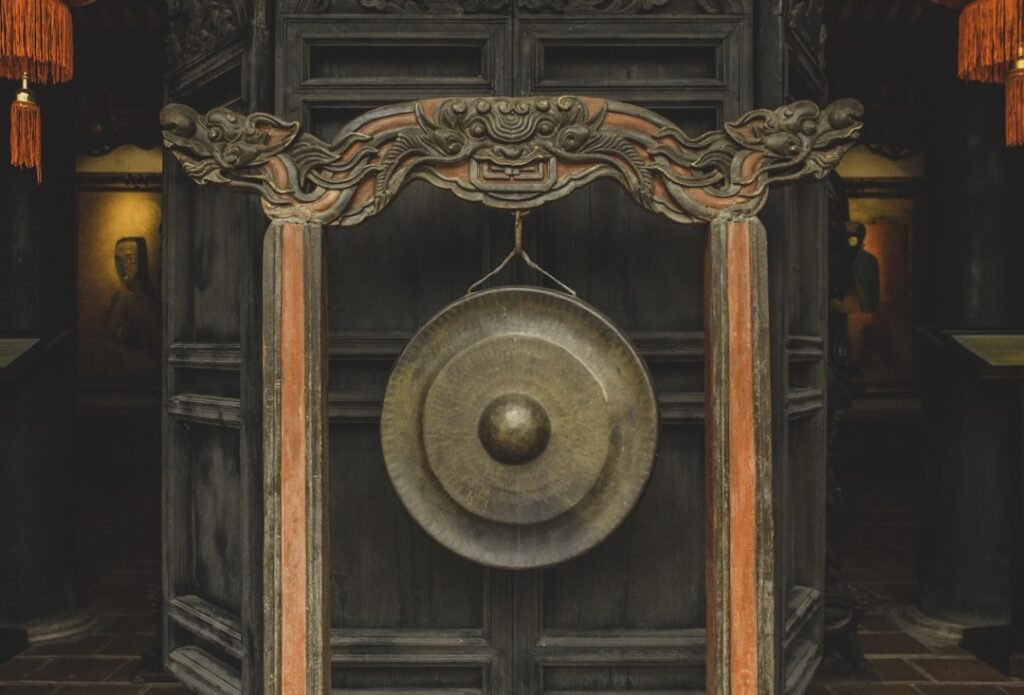Qi, often translated as “life force” or “vital energy,” is a fundamental concept in Chinese culture that permeates various aspects of life, philosophy, and health. It is believed to be the essential energy that flows through all living things, connecting the physical and spiritual realms. The significance of Qi extends beyond mere physical vitality; it embodies the harmony between nature and humanity, reflecting the intricate balance that is central to Chinese thought.
In traditional Chinese beliefs, Qi is not just an abstract idea but a tangible force that influences health, emotions, and even the environment. The importance of Qi can be seen in numerous practices and disciplines within Chinese culture, from medicine to martial arts, and even in daily life. Understanding Qi is essential for grasping the holistic approach that characterises Chinese philosophy.
It serves as a bridge between the material and immaterial, illustrating how energy flows through the universe and affects everything from personal well-being to the dynamics of relationships. As we delve deeper into the origins, evolution, and applications of Qi, we uncover a rich tapestry of meaning that continues to resonate in contemporary society. Spaces are filling up fast! Register for Chinese classes at the LC Chinese School in Oslo today.
Table of Contents
ToggleSummary
- Qi is a fundamental concept in Chinese culture, encompassing the idea of vital energy and life force.
- The character for Qi has evolved over time, reflecting the changing understanding of this concept in Chinese philosophy.
- Traditional Chinese Medicine is deeply rooted in the concept of Qi, with the balance and flow of Qi being essential for good health.
- Qi is not only a cultural and linguistic concept, but also influences practices such as martial arts, meditation, feng shui, and traditional Chinese architecture.
- Despite misconceptions and myths, the enduring legacy of Qi continues to shape contemporary Chinese society and language.
The Origins of the Character for Qi
The character for Qi (气) has its roots in ancient Chinese script, where it originally depicted vapour or gas. This etymological background highlights the transient and dynamic nature of Qi, suggesting that it is not a static entity but rather a fluid force that can change form and intensity. The character itself is composed of two parts: the radical for “air” or “gas” on the top, which signifies its ethereal quality, and a component that represents “rice” at the bottom, symbolising nourishment and vitality.
This duality encapsulates the essence of Qi as both an elemental force and a source of life. Over time, the character has evolved in its usage and meaning, reflecting the changing understanding of Qi within Chinese culture. In classical texts, Qi was often associated with breath and life itself, linking it to concepts of health and longevity.
The character’s evolution mirrors the philosophical developments surrounding Qi, as scholars and practitioners sought to articulate its significance in various domains. This historical journey not only enriches our understanding of the character but also underscores the profound connection between language and cultural identity in China.
The Evolution of the Concept of Qi in Chinese Philosophy

The concept of Qi has undergone significant evolution throughout Chinese philosophical history. In early Daoist texts, Qi was viewed as a fundamental principle that governed the cosmos, embodying the dynamic interplay between Yin and Yang—the dual forces that represent balance in nature. Daoism posits that understanding and harnessing Qi can lead to harmony with the universe, promoting both physical health and spiritual enlightenment.
This perspective laid the groundwork for later philosophical interpretations that integrated Qi into broader metaphysical frameworks. Confucianism also engaged with the concept of Qi, albeit from a different angle. While Daoism emphasised individual harmony with nature, Confucianism focused on social harmony and moral cultivation.
In this context, Qi was seen as a vital force that could be cultivated through ethical behaviour and education. The interplay between these two philosophical schools illustrates how Qi transcends mere physicality; it embodies moral and ethical dimensions that shape human interactions and societal structures. As such, the evolution of Qi reflects a rich dialogue between different schools of thought, each contributing to a more nuanced understanding of this vital energy.
The Relationship Between Qi and Traditional Chinese Medicine
In Traditional Chinese Medicine (TCM), Qi is considered the cornerstone of health and well-being. TCM practitioners believe that a balanced flow of Qi is essential for maintaining physical health, emotional stability, and overall vitality. When Qi is abundant and flowing freely through the body’s meridians—pathways through which energy circulates—individuals experience optimal health.
Conversely, blockages or deficiencies in Qi can lead to illness or discomfort, highlighting the importance of maintaining this vital energy. Various TCM practices aim to regulate and enhance Qi flow within the body. Acupuncture, for instance, involves inserting fine needles into specific points along the meridians to stimulate the flow of Qi and restore balance.
Herbal medicine also plays a crucial role in TCM by using natural substances to nourish or invigorate Qi. Additionally, practices such as Tai Chi and Qigong are designed to cultivate awareness of Qi and promote its harmonious flow through gentle movement and breath control. This intricate relationship between Qi and health underscores the holistic approach inherent in TCM, where physical ailments are viewed not just as isolated issues but as manifestations of imbalances in one’s vital energy.
Exploring the Cultural and Linguistic Connections of Qi
The concept of Qi extends beyond its philosophical and medical implications; it is deeply embedded in the cultural fabric of China. Linguistically, the character for Qi appears in various compound words that reflect its multifaceted nature. For example, “Qigong” refers to practices aimed at cultivating one’s vital energy through movement and meditation, while “Qiwei” denotes an atmosphere or ambience influenced by energy dynamics.
These linguistic connections illustrate how integral Qi is to understanding not only health but also social interactions and environmental influences. Culturally, Qi manifests in art, literature, and even culinary traditions. The notion of harmony associated with Qi can be seen in traditional Chinese painting, where landscapes are depicted with an emphasis on balance and flow.
Similarly, culinary practices often consider the energetic properties of food—how certain ingredients can enhance or deplete one’s Qi—demonstrating a holistic approach to nourishment. This cultural richness surrounding Qi highlights its role as a unifying concept that connects various aspects of life in China, reinforcing its significance as more than just a philosophical idea but as a lived experience.
The Influence of Qi in Chinese Martial Arts and Meditation Practices

Qi plays a pivotal role in Chinese martial arts, where it is believed to enhance physical performance and mental focus. Practitioners are taught to harness their internal energy to improve strength, agility, and reflexes while maintaining a calm mind. Styles such as Tai Chi emphasise slow, deliberate movements that cultivate awareness of Qi flow within the body.
This practice not only enhances physical capabilities but also promotes relaxation and mental clarity—qualities essential for effective martial arts training. Meditation practices in China also centre around the cultivation of Qi. Techniques such as Zazen (sitting meditation) encourage practitioners to focus on their breath and internal sensations, fostering a deeper connection with their vital energy.
Through meditation, individuals learn to regulate their Qi consciously, leading to enhanced emotional stability and spiritual growth. The integration of Qi into martial arts and meditation underscores its importance as a tool for personal development—enabling practitioners to achieve greater harmony within themselves and with their surroundings.
Qi in the Context of Feng Shui and Traditional Chinese Architecture
Feng Shui, an ancient practice concerned with harmonising individuals with their environment, heavily relies on the concept of Qi. In this context, Qi is viewed as an invisible force that flows through spaces, influencing the energy dynamics within homes and buildings. Practitioners of Feng Shui aim to create environments that promote positive Qi flow while minimising stagnation or blockages that could lead to negative outcomes.
Traditional Chinese architecture reflects these principles by incorporating elements designed to enhance Qi flow. For instance, buildings are often oriented according to cardinal directions to align with natural energy patterns. The use of natural materials and harmonious proportions further contributes to creating spaces that resonate with positive energy.
This architectural philosophy not only serves aesthetic purposes but also embodies a deep respect for nature’s rhythms—demonstrating how deeply intertwined the concept of Qi is with both physical structures and human experiences.
The Modern Interpretation and Application of Qi in Contemporary Chinese Society
In contemporary Chinese society, the concept of Qi continues to hold relevance across various domains—from health practices to lifestyle choices. As urbanisation increases and modern lifestyles become more fast-paced, many individuals are turning back to traditional practices that emphasise balance and well-being through Qi cultivation. This resurgence reflects a growing awareness of holistic health approaches amidst rising stress levels and lifestyle-related ailments.
Moreover, modern interpretations of Qi have found their way into wellness industries worldwide. Practices such as yoga and mindfulness meditation have incorporated elements inspired by traditional Chinese concepts of energy flow. This cross-cultural exchange highlights how the essence of Qi transcends geographical boundaries—resonating with individuals seeking balance in an increasingly chaotic world.
As such, while rooted in ancient traditions, the concept of Qi remains dynamic and adaptable to contemporary needs.
Comparing the Concept of Qi with Similar Ideas in Other Cultures
The idea of vital energy is not unique to Chinese culture; similar concepts exist across various cultures worldwide. For instance, in Indian philosophy, “Prana” refers to life force energy that sustains all living beings—akin to the notion of Qi in China. Similarly, “Ki” in Japanese culture embodies a similar essence related to energy flow within individuals and their environments.
These parallels suggest a universal recognition of an underlying life force that connects all beings—a testament to humanity’s shared quest for understanding vitality and existence. However, while these concepts share similarities, they are often embedded within distinct cultural frameworks that shape their interpretation and application. Exploring these connections enriches our understanding of how different societies conceptualise energy dynamics while highlighting both unique perspectives and common threads.
Debunking Misconceptions and Myths Surrounding Qi
Despite its significance in Chinese culture, misconceptions about Qi abound—often stemming from oversimplifications or misinterpretations by those unfamiliar with its depth. One common myth is that Qi is merely a mystical or supernatural force; however, it is essential to understand that Qi represents a holistic view of energy dynamics rather than an esoteric phenomenon. It encompasses both physical processes—such as breath and circulation—and metaphysical aspects related to consciousness and emotional states.
Another misconception is that cultivating Qi requires special abilities or esoteric knowledge reserved for a select few. In reality, practices aimed at enhancing one’s awareness of Qi—such as meditation or gentle movement—are accessible to anyone willing to engage with them mindfully. By debunking these myths surrounding Qi, we can foster a more nuanced appreciation for its role in health, philosophy, and cultural identity.
The Enduring Legacy of Qi in Chinese Language and Culture
The concept of Qi stands as a testament to the richness of Chinese language and culture—a multifaceted idea that has evolved over millennia yet remains deeply relevant today. From its origins in ancient philosophy to its applications in medicine, martial arts, architecture, and modern wellness practices, Qi embodies a holistic understanding of life that resonates across various domains. As we continue to explore this enduring legacy, it becomes clear that understanding Qi offers valuable insights into not only Chinese culture but also our shared human experience.
By embracing this concept—recognising its significance within our lives—we can cultivate greater awareness of our own energies while fostering harmony within ourselves and our environments. For those interested in delving deeper into this fascinating subject matter or seeking practical applications related to Qi cultivation, consider enrolling in one of the Chinese courses offered at LC Chinese School in Oslo. These courses provide an excellent opportunity to explore not only language but also cultural concepts like Qi—enabling students to gain a richer understanding of both linguistic nuances and philosophical underpinnings inherent within Chinese culture.
Whether you are looking to enhance your language skills or deepen your appreciation for this vital concept, LC Chinese School offers an engaging environment for learning about all aspects of Chinese heritage.







